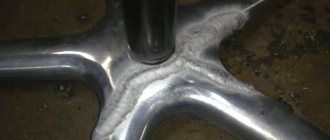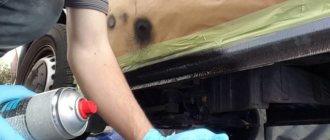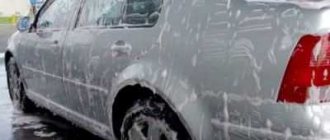Before you learn how to make 76 gasoline from 92, you need to understand that it is better to find a gas station that sells 76 or 80 gasoline. If it is impossible to purchase 76 fuel, you can modify the internal combustion engine for a lower octane number of gasoline. This is usually done by increasing the internal volume of the combustion chamber, for example, by using spacers under the cylinder head (if we are talking about a car) or by installing a bushing under the spark plug if we are talking about a gasoline tool.
The use of gasoline with a higher octane number in the engine is highly not recommended, because can lead to burnout of valves and incorrect temperature conditions (the engine heats up more). But using gasoline “diluted” to a reduced octane number is also unsafe, but more on that below.
How to lower the octane number of gasoline
So, to lower the octane number of gasoline, you can use kerosene, the octane number of which is 45, this number means faster combustion of the fuel mixture and a slower ignition delay. If we add kerosene to gasoline, we slow down the combustion of the fuel, which actually means a lower octane number.
But diluting gasoline to lower the octane number will lead to dirtier combustion, which in turn will inevitably lead to increased contamination of the spark plug and piston system (carbon deposits), as well as an increase in the temperature of the internal combustion engine.
We do not recommend lowering the octane number of gasoline: using fuel created in this way can ruin the engine!
Kerosene should not be taken for kerosene stoves, it is too dirty and there will be a lot of soot. Ideally, you need to take fuel for light aircraft.
Controversy of some points and arguments
Despite the common origin and similarity in chemical composition, kerosene from a physicochemical point of view is significantly different from gasoline. The differences are as follows:
- Technically, any kerosene is much closer to diesel fuel, which, as is known, is characterized by its cetane number. Therefore, kerosene can be used in diesel cycle engines, which rely on spontaneous detonation of fuel under pressure. Kerosene is not used in internal combustion engines, with the exception of small piston aircraft.
- The flash point of kerosene varies greatly among brands, so the conditions for its ignition in the engine will also be different.
- Some old textbooks and reference books provide so-called conventional octane numbers for diesel fuel. Their value is 15...25. This is negligible compared to similar figures for gasoline, but it is necessary to take into account the fact that diesel fuel is burned in a completely different type of engine. Diesel has low volatility, low detonation resistance, and at the same time high energy per unit volume.
- The fundamental difference between gasoline and kerosene is that kerosene is actually a mixture of more than one linear or branched alkane hydrocarbon, none of which has double or triple bonds. For its part, octane is one of the alkane groups of hydrocarbons, and is the main component of gasoline. Therefore, it was possible to determine the so-called octane number of kerosene only after somehow separating one alkane hydrocarbon from another.
where does dirt come from
Now let’s find out what we will clean our fuel system from, and where the dirt in it comes from if, in fact, we pour clean fuel into the tank. To find out, let's talk a little about fuel. Gasoline, as you know, has an octane number that characterizes the detonation resistance of gasoline, or, to put it simply, it is resistance to self-ignition under compression. An example of this is that if you once drove a Muscovite - 412 and poured 76 gasoline, then after turning off the ignition, the engine still "leaks" intermittently for some time - this is an example of low-octane gasoline. And naturally, knowing this, we pour into our “swallow” at least 92, and preferably 95. But the octane number is the amount of iso-alkanes in the mixture. The standard with an octane number of 100 is isooctane, normal heptane is 0. Therefore, high-quality gasoline contains only iso-alkanes to increase the octane number. This is achieved by catalytic reforming of gasoline. But this process is not cheap. Therefore, to increase octane, they pour into gasoline whatever they can get their hands on, the worst being aromatic hydrocarbons. Toluene is one of them. Its octane is 105, but since it belongs to aromatic hydrocarbons, it is characterized by tarring as a result of its reactions. Also, unsaturated hydrocarbons in fuel lead to the formation of polymers with a low content of molecules in the chain. All this settles in the form of resin throughout the fuel system. We will not discuss what this leads to. This is what we need to wash away.
Aviation gasolines [edit | edit code ]
The main area of application of aviation gasoline is the fuel of highly loaded piston internal combustion engines.
The main method of producing aviation gasoline is direct distillation of oil, catalytic cracking or reforming without additives or with the addition of high-quality components, ethyl liquid and various additives.
For aviation gasoline, the main quality indicators are:
- detonation resistance (determines the suitability of gasoline for use in engines with a high degree of compression of the working mixture without the occurrence of detonation combustion)
- fractional composition (indicates the volatility of gasoline, which is necessary to determine its ability to form a working air-fuel mixture; characterized by boiling point temperature ranges (40-180 (°) C) and saturated vapor pressure (29-48 kPa))
- chemical stability
(
the ability to withstand changes in chemical composition during storage, transportation and use
).
The classification of aviation gasoline is based on their anti-knock properties, expressed in octane numbers and grade units. Grades of Soviet aviation gasoline were previously marked according to the system: the letter B followed by a hyphen - a number indicating the octane number. As an example, in the USSR in the mid-20th century, aviation gasoline was produced - B-59
,
B-70
,
B-74
,
B-78b
and
B-78g
, and the last two were slightly different in chemical composition, which was indicated by the letters after the number: b - this is from the Baku oil fields, and d - from the Grozny ones.
Subsequently, to increase the octane number, an anti-knock additive was introduced into gasoline:
- product R-9
(tetraethyl lead - 55%, ethyl bromide - 35%, monochloronaphthalene - 10%, red dye) - product B-20
(tetraethyl lead - 55%, ethyl bromide - 35%, dichloroethane - 10%, blue dye)
The additive was added in volumes from 1 to 4 cubic meters. see liquids per 1 liter. Gasolines with the additive were marked:
- based on B-59: 1B-59(73), 2B-59(78), 3B-59(81), 4B-59(82)
- based on B-70: 1B-70(80), 2B-70(85), 3B-70(87), 4B-70(88)
- based on B-74: 1B-74(85), 2B-74(88), 3B-74(90), 4B-74(92)
- based on B-78: 1B-78(87), 2B-78(92), 3B-78(93), 4B-78(95)
where the number before the letter B means the volume of additive in cm3 per liter of gasoline. The number in parentheses shows the final octane number of the mixture of gasoline and additive. Fuel mixtures were also prepared with the addition of benzenes and isooctanes to gasoline, with an octane number of 95:
With the proliferation of turbojet engines, the production of aviation gasoline was significantly reduced. By the end of the 20th century, leaded gasoline B-91/115
and
B-95/130
, which are marked according to GOST 1012-72 through a fraction: in the numerator - the octane number or grade on a lean mixture, in the denominator - the grade on a rich mixture.
[1] Then the production of these gasolines in the Russian Federation was completely stopped, and the light aircraft fleet began to use motor gasoline AI-95 or imported gasoline AVGAS 100LL
(since the fall of 2020, 100LL is produced in the Russian Federation according to GOST R 55493-2013).
Read more: Traffic rules for height restrictions
The production of B-70 gasoline also remained, which for a long time was used as fuel for turbostarters of engines of aircraft such as Tu-16, Tu-22, MiG-21 and a number of others. Currently, this gasoline is mainly used in the maintenance of equipment as a solvent .
why kerosene?
It is better to use other organic solvents for flushing the fuel system of a car. First, let’s decide what they are trying to flush the system with; this is;
These are the most popular and most deadly solvents for flushing the fuel system of a car. Why? Firstly, acetone and ethyl alcohol are hygroscopic substances, which means that they pull moisture from the air, which can introduce water into the fuel system. Second, these solvents dry out the system (they do not have the ability to lubricate rubbing parts), and as a result, your fuel pump will become unusable. Do not forget about fire and explosion safety, because these substances succeed in this. As for toluene, it is not hygroscopic, and it belongs to the aromatic hydrocarbons, which in turn leads to a relationship with resinous substances in the system that must be removed. And as you know, related substances dissolve well in each other. But nevertheless, it again does not lubricate the rubbing surfaces, and at temperature it easily cokes, which will lead to clogging of the nozzle, and also easily tars.
As for kerosene, there are almost no disadvantages in it for these purposes. It belongs to saturated hydrocarbons. Which are related to deposits in the fuel system, and as mentioned earlier, are highly soluble in each other. Kerosene is not hygroscopic, therefore the possibility of introducing moisture into the fuel system is minimal. In terms of fire and explosion safety, everything is also in order. An equally important factor is that it is less toxic than the above solvents, except for ethanol. Do not forget that it is cheaper and does not belong to the category of precursors, like acetone and toluene. And most importantly, it lubricates the rubbing surfaces, and the fuel pump will thank you for this. Moreover, in the early stages it was used as fuel for internal combustion engines, which cannot be said about other solvents.
What do planes fuel?
There is a concept of aviation fuel. This is a flammable substance that is burned in the combustion chamber of the engine and releases thermal energy. There are two types of fuel:
- aviation gasoline;
- aviation kerosene.
Each type of fuel is used for specific purposes, so the statement that only kerosene is used in aviation is incorrect. Gasoline is necessary for the operation of piston engines. Aircraft with gas turbine engines fly on jet fuel.
Refueling an aircraft through a hatch located in the wing
In the past, piston engines were developed that were supposed to run on diesel fuel. However, diesel was later replaced by kerosene. As oil reserves are depleted, new fuels based on other materials are being sought. Options for using cryogenic, synthetic and other alternative types of fuel are being considered.
It is important to understand that any aircraft engine is designed for a specific type of fuel, which allows it to operate at full capacity. Alternative types of fuel are also proposed, on which the equipment will be able to operate, but with some restrictions.
Interesting fact : the first aircraft engines ran on regular gasoline, which is used to fuel cars. Later there was a need to improve the fuel. For example, in the USSR the main types of aviation gasoline were Baku and Grozny, because they were supplied by the Baku and Grozny factories.
Aviation gasoline is little used nowadays, since it has been replaced by more suitable kerosene-based fuel. Gasoline must be resistant to detonation and have a stable chemical and fractional composition.
Interesting: Why do Africans have dark skin, because it gets hotter in the sun? Reasons, photos and videos
To achieve the required parameters, fuel manufacturers leaded it with tetraethyl lead. However, this substance is extremely toxic and is prohibited for use. No other options for improving the quality of gasoline have yet been found. Experts all over the world are working on this problem.
Airplane refueling
To refuel this or that type of aircraft, certain brands of jet fuel are used. In Russia and the CIS countries, subsonic aircraft for various purposes are fueled with sulfur containing fuel (TS-1). In Europe, Jet A-1 (a more environmentally friendly analogue) is used for these purposes.
Supersonic aircraft fly on RT, a type of jet fuel that undergoes thorough hydrotreating to remove various impurities and compounds. In fact, it can also be used in subsonic aviation.
The engines of some supersonic aircraft require even higher-quality heat-resistant fuel - for example, grades T-6 and T-8B. Its production requires significant material costs, therefore it is used exclusively for the purposes of the Ministry of Defense of the Russian Federation.
Automobile gasolines
The main requirements that high-quality motor gasoline must meet are:
- high energy and thermodynamic indicators, they will allow the fuel to release the maximum amount of heat during combustion with a small heat capacity of the combustion products;
- optimal level of volatility (during transportation and storage it should be minimal, during operation it should ensure optimal fuel combustion rate and reliable ignition);
- good pumpability through the fuel system, regardless of environmental conditions, temperature, dust, humidity;
- minimum level of corrosive activity, which is ensured due to the absence of components in gasoline that can have a destructive effect on the material of engine structural elements;
- stability of properties and characteristics during fuel storage;
- non-toxic.
Motor gasolines are usually labeled according to their octane number. As it increases, the fuel's resistance to detonation increases, which makes it possible to use it when operating engines with a high degree of compression of the fuel mixture. The main brands of gasoline used today to refuel cars are:
- A-76 – leaded yellow fuel or unleaded colorless fuel with non-standardized density, the main area of use of which is agriculture;
- A-80 - fuel, during the production of which the characteristics of the A-76 were slightly improved;
- A-92 is the most common brand, corresponding in quality to 92RON;
- AI-95 is an improved quality fuel, the quality of which corresponds to the premium brand in Europe or 95RON in Asia.
LLC “offers its services for the supply of diesel fuel in Moscow in volumes from 1000 liters. We offer guarantees of the quality of the supplied petroleum products, the reliability of our technical base, the services of drivers experienced in working with dangerous goods, and punctuality in fulfilling orders. Call us to leave a request and agree on a time frame.
>
How to determine the effectiveness of kerosene as a fuel?
In any case, not in terms of octane number: it does not exist for kerosene. Numerous experiments, which were carried out in laboratory rather than industrial conditions, gave a significant discrepancy in the final results. This is explained as follows. When crude oil is distilled, it produces an intermediate fraction between gasoline and kerosene, often called naphtha or naphtha. Untreated naphtha is not suitable for mixing with gasoline, as it reduces its octane number. Naphtha is also not suitable for mixing with kerosene because, in addition to performance considerations, it reduces the flash point. Therefore, naphtha in most cases is subjected to steam reforming to produce fuel gas or synthesis gas. The distillation products when producing kerosene can have different fractional compositions, which are not constant even within the same batch of petroleum product.
In conclusion, we note that TS-1 aviation kerosene is used as fuel for jet aircraft. A jet engine is a gas turbine where combustion continues in a combustion chamber. This distinguishes such engines from diesel or gasoline engines, where ignition occurs at a required stage in the thermodynamic cycle. For such kerosene it is also more correct to calculate the cetane number rather than the octane number.
Consequently, for kerosene there is no, and there cannot be, an analogue with the octane number of gasoline.
The main areas of use of gasoline were their use for the operation of automobile and aircraft engines. But each of the listed areas of use in production technology has its own significant differences, which determine the properties of petroleum products.
In order to ensure the most efficient and rational use of oil, it is subjected to a distillation procedure, which allows for division into fractions. The technology consists of heating a liquid to a certain temperature. As a result, vapors are formed, after cooling of which the condensate will be the manufactured oil product: it can be gasoline, diesel fuel, kerosene, naphtha, or fuel oil.
Oil fractions are heterogeneous, so it is impossible to use any strictly defined chemical formulas to express them. At the same time, gasolines are light petroleum fractions that boil away at temperatures above +200 ˚С. These are organic mixtures that, depending on their chemical composition, will have individual properties. Ultimately, they determine the quality of the fuel.
The main areas of use of gasoline were their use for the operation of automobile and aircraft engines. But each of the listed areas of use in production technology has its own significant differences, which determine the properties of petroleum products.
How is aviation gasoline different from automobile gasoline?
It is immediately worth noting that most types of air transport (commercial aviation) use aviation fuel for flights, which is also used for work. Direct aviation gasoline is used only for aircraft that operate using piston engines (this can be either midget aircraft or small commercial aircraft).
Read more: Vodka for colds reviews
This has led to the fact that the production of aviation gasoline has become a highly specialized activity with relatively small volumes of output. There are three main factors that are critical to the fuel used for aircraft:
- detonation resistance, which is significantly higher than that of automobile fuel;
- fractional composition (it is decisive for the boiling point of gasoline and its volatility);
- chemical stability;
It is also worth noting a higher octane number, the ability to perform the functions of a coolant, a lubricant for the rubbing elements of the engine, and a higher specific heat of combustion.











